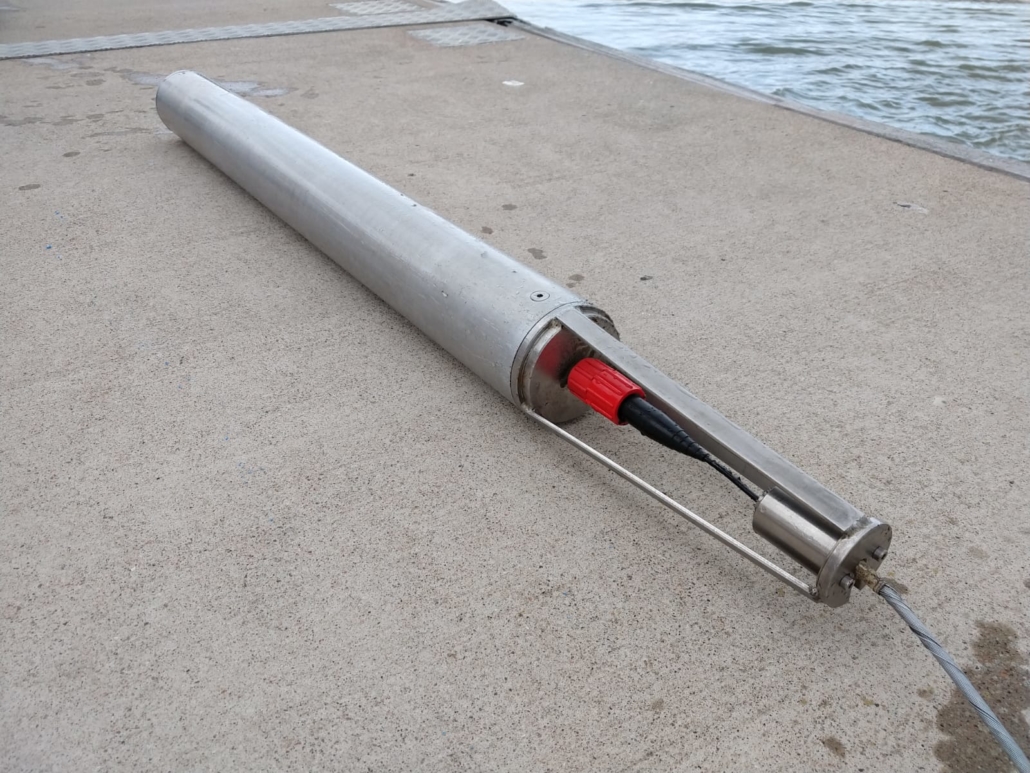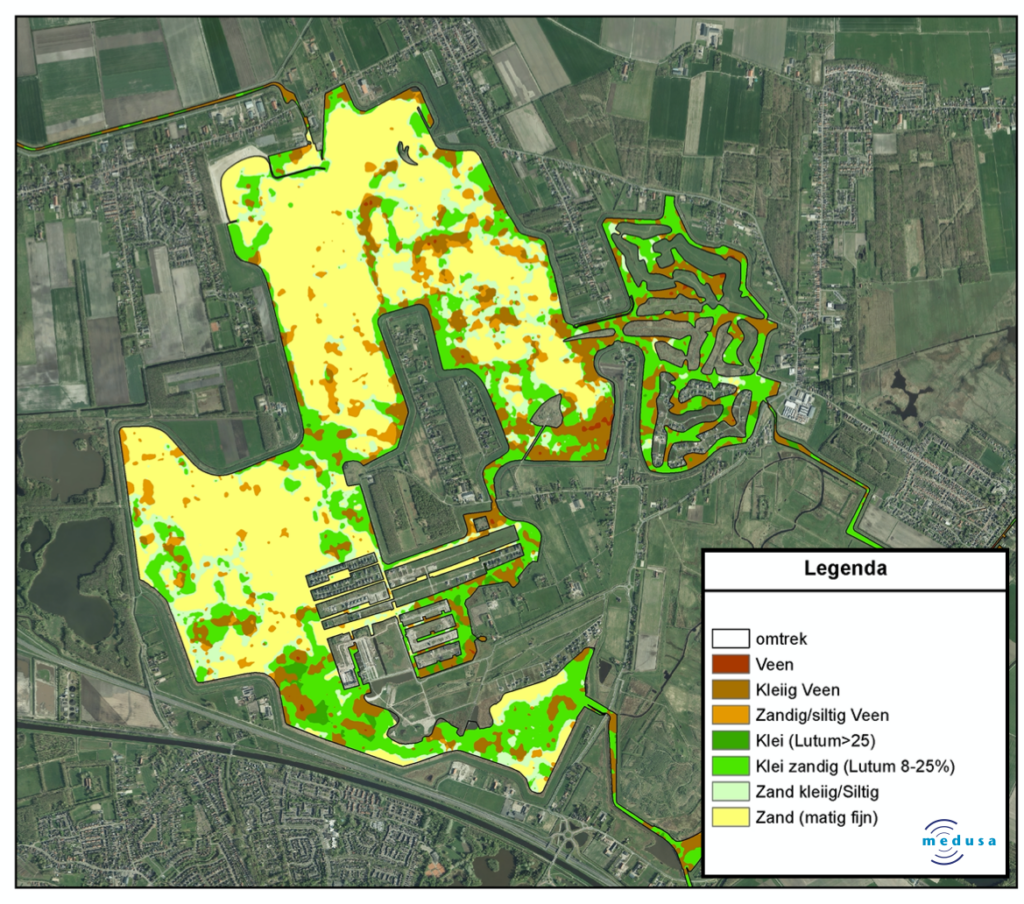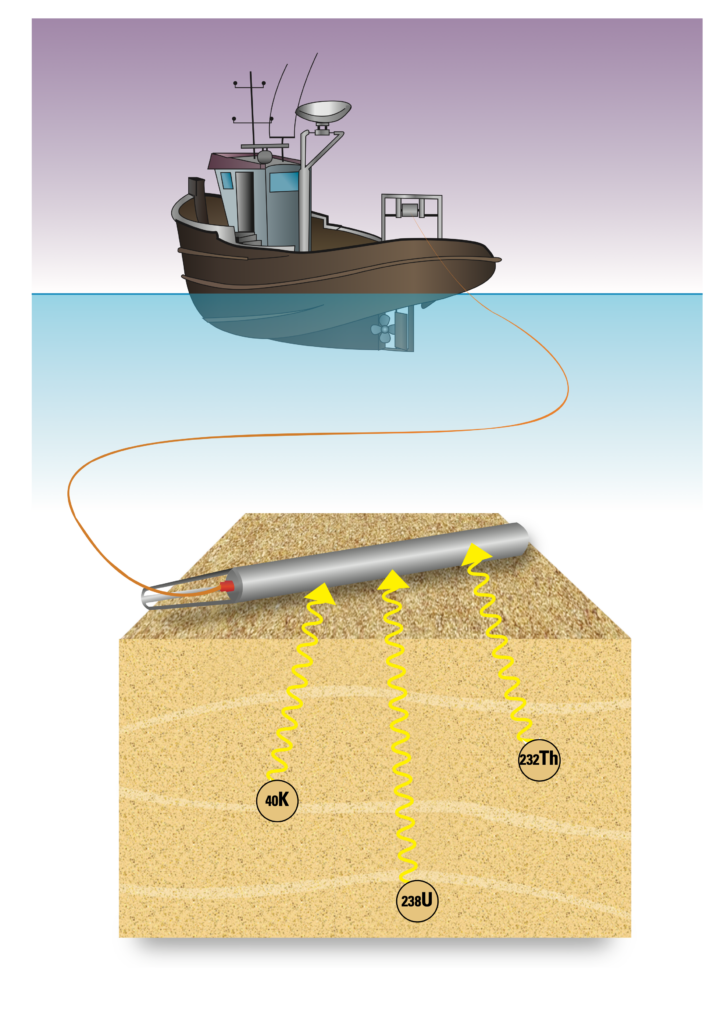


Medusa’s gamma spectrometers are used all over the world for the mapping of soil and sediments. With the rapidly growing demand for sediment mapping, Medusa has made great strides to make the underwater gamma spectrometer more manageable and efficient. The sensor was made autonomous with wireless communication technology.

The MS1200 probe can visualize silt content or contamination of the waterbed.
In collaboration with Medusa Radiometrics, we continuously work on improving our sensors. Our ambition is to make measurement systems for mapping soil composition and soil structure more efficient, accurate and manageable, so they can be used more widely and easily.
The underwater gamma spectrometer measures the composition and contamination of the sediment. Because the sensor is towed over the sediment and takes continuous measurements, it provides a comprehensive image of the waterbed. The current system uses a towing cable for data communication, which is prone to errors and requires special cables. To simplify the sensor’s application, we developed technology for wireless communication.

The soil composition of Oldambt lake, measured with the Medusa gamma spectrometer.
In the project, we will make the sensor autonomous, and develop technology to make the sensor communicate ‘wirelessly’ with the ship. We will do this by using an acoustic modem. This is a loudspeaker/microphone that can be used underwater to send data via sound waves. Normal wireless connections like Wi-Fi and Bluetooth do not work underwater because they are attenuated by the water. This is why acoustic modems are the only option for wireless underwater communication.
The challenge is that the bandwidth (the amount of data that can be sent per second) of those modems, is a factor of 10,000 lower than our current system needs to function. We are therefore going to make the sensor much more ‘self-contained’. To do this, we are going to bring all the data acquisition hardware, which is currently on board the ship, to the sensor so that the system needs much less interaction with the operator. We are also going to extend the system with an internal battery.
Making the system autonomous has the effect of increasing its applicability. Less expert knowledge is required to work with the system. The implementation of the acoustic modem ensures that no large, specially developed towing cable systems are needed for this measurement, and any towing cable can be used for this purpose. We also want to make the system smaller and more manageable. By using embedded electronics and smart materials, we are going to minimise the size and weight of the tube. This would result in the whole measurement system, like our other measurement systems, fitting into a single case.

The gamma spectrometer is towed across the water bottom behind a vessel.
The project is supported with European Regional Development Fund (ERDF) funding from the European Union with SNN as the implementing agency.
Want to learn more? Check out the following websites:
Europees fonds voor regionale ontwikkeling (EFRO)
SNN – kennis en innovatie subsidie